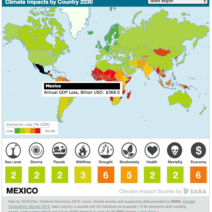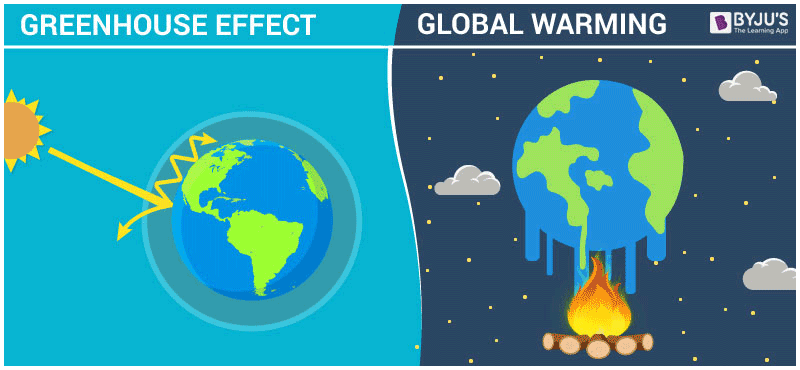The relationship between global warming and the greenhouse effect constitutes a critical subject in contemporary environmental discourse. Understanding this relationship is paramount for addressing climate change comprehensively. While both terms are often used interchangeably, they encapsulate distinct phenomena requiring elucidation.
At its core, the greenhouse effect is a natural and essential atmospheric process. This phenomenon occurs when the Earth’s surface absorbs solar radiation and re-radiates it as infrared energy. Greenhouse gases (GHGs) such as carbon dioxide, methane, and nitrous oxide trap some of this outgoing energy, thus maintaining the planet’s temperature at a hospitable level. Without the greenhouse effect, life as we know it would be prohibitive due to extreme temperatures. Therefore, while the greenhouse effect is inherently beneficial, its exacerbation due to anthropogenic activities is where the concern arises.
Global warming, on the other hand, refers specifically to the recent and unprecedented rise in Earth’s average surface temperature, primarily attributed to increased levels of greenhouse gases produced by human actions—primarily fossil fuel combustion, deforestation, and industrial processes. This anthropogenic interference has intensified the greenhouse effect, leading to a median temperature anomaly that has dire implications for global ecosystems.
The interaction between these two phenomena can be visualized as a paradox: while the greenhouse effect is essential for maintaining life, its augmentation due to human activity catalyzes global warming, thereby threatening that very life. This contradiction necessitates a deeper inquiry into the mechanisms, consequences, and solutions pertinent to the climate crisis.
The mechanisms driving the greenhouse effect primarily hinge on the composition of the atmosphere. Certain gases, including carbon dioxide (CO₂) and methane (CH₄), exhibit a property known as infrared absorptivity, allowing them to capture heat effectively. Although these gases are naturally present, human activities have resulted in their concentrations soaring. For instance, pre-industrial levels of atmospheric CO₂ were around 280 parts per million (ppm), whereas current levels have surpassed 410 ppm. This surge correlates with observed warming trends, underscoring the urgent need for emission reductions.
Consequently, the consequences of global warming manifest globally and touch virtually every facet of the Earth’s systems. Increased temperatures lead to alterations in weather patterns, resulting in more frequent and severe weather events such as hurricanes, floods, heatwaves, and droughts. Moreover, the melting of polar ice caps and glaciers contributes to rising sea levels, endangering coastal communities and ecosystems. The ripple effects on biodiversity are pronounced, with many species facing extinction due to shifting habitats and food sources compounded by the pressures of human encroachment.
The societal implications accompanying global warming are equally concerning. Economies dependent on climate-sensitive sectors such as agriculture, fisheries, and tourism are vulnerable to the shifting climatic parameters. Food security could become increasingly jeopardized as changing weather patterns diminish harvests. Additionally, the health implications stemming from global warming—such as increased respiratory issues due to poorer air quality and the spread of vector-borne diseases—pose a grave threat to public health worldwide.
Mitigating the impacts of global warming requires a multifaceted approach informed by science and grounded in policy. Transitioning toward renewable energy sources is imperative in curtailing greenhouse gas emissions. Solar, wind, and hydropower present viable alternatives that can provide sustainable energy without the adverse climate impacts associated with fossil fuels.
Moreover, enhancing energy efficiency in buildings, transportation, and industry can significantly reduce energy demand and emissions. Implementing carbon capture and storage (CCS) technology also plays a vital role in extracting CO₂ from the atmosphere and sequestering it underground. Policy measures, including carbon pricing and emissions trading systems, encourage industries to transition away from fossil fuels toward cleaner alternatives.
In addition to mitigation strategies, adaptation efforts are crucial for communities already impacted by climate change. Building resilient infrastructure, restoring ecosystems, and investing in disaster preparedness initiatives can significantly reduce vulnerability to climate-related hazards. Furthermore, fostering education and awareness is essential for empowering individuals and communities to contribute meaningfully to adaptation and mitigation efforts.
An often-overlooked aspect of addressing the climate paradox is the ethical dimension. Climate justice must be integral to climate action, recognizing that those who contribute least to the problem—often marginalized communities—are disproportionately affected by its consequences. Ensuring equity in climate policies, financing sustainable development initiatives, and actively involving affected populations in decision-making processes are essential for achieving a just transition to a low-carbon economy.
In conclusion, the climate paradox encapsulates the intricate and multifaceted relationship between global warming and the greenhouse effect. While the greenhouse effect is vital for sustaining life, its enhancement through human activity is precipitating global warming with catastrophic consequences. Addressing this duality requires urgent, concerted global action guided by scientific understanding, policy innovation, and ethical considerations. By fostering a holistic approach, stakeholders can work toward a sustainable future, safeguarding the planet for generations to come, and ultimately balancing the scales of nature that have been tipped by human enterprise.







